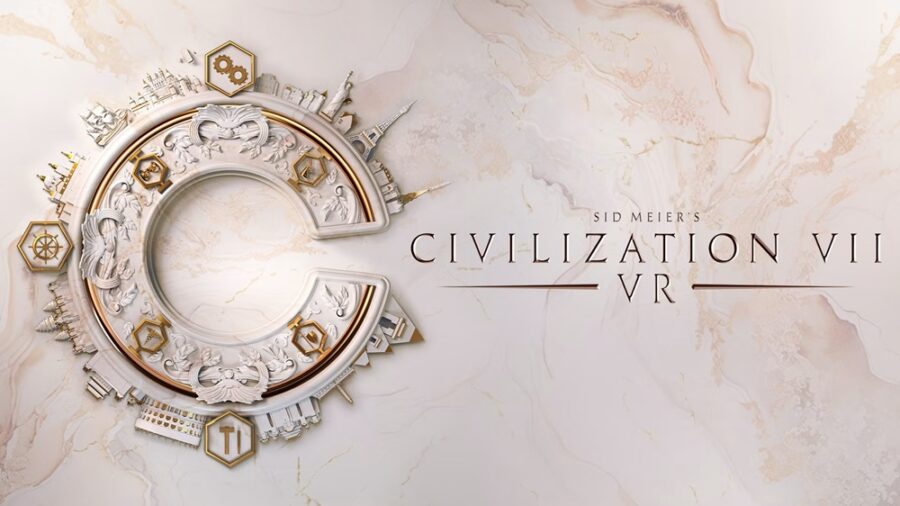
TL;DR for Civilization VII – VR
(played on a Meta Quest 3 128 GB model)
| Pros | Cons |
| + Great core mechanics | – Bad UI |
| + Beautiful music | – Not enough information |
| – Major bugs and crashes | |
| – Consistently choppy performance |
INTRODUCTION
Sid Meier’s Civilization series is the granddaddy of the 4X genre, and still remains its barely disputed champion.
4X—for those who don’t know—refers to its four “X”s of X-plore, X-pand, X-ploit, and X-terminate; a subgenre of “grand strategy” games like Risk, but with procedurally generated maps in which the player first discovers the world around them before settling their own territories and borders.
These games are long.
Every turn you make choices about all of your settlements and units on the map.
The number of choices per turn you make throughout a game increases dramatically as you X-pand from one settlement and a couple of units to, likely, dozens.
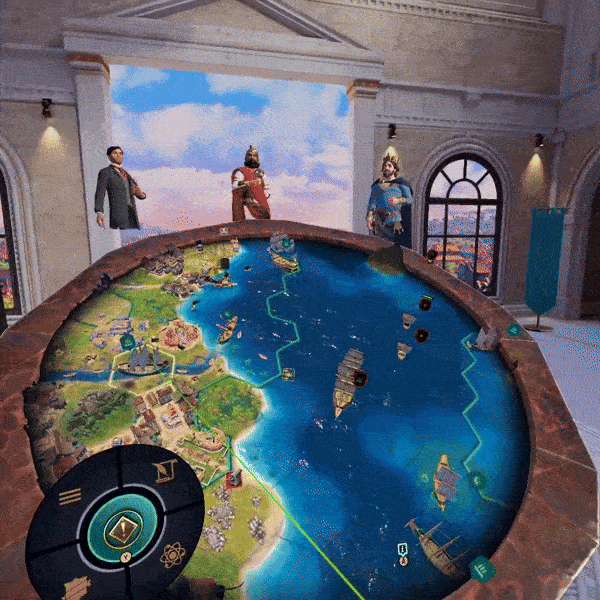
I’ve spent arguably too much of my precious time on Earth playing games in the Civilization series.
“Just one more turn” is the meme that expresses exactly how addictive the series’ core gameplay loop is.
With so many systems to manage—resources, military, culture, science, happiness and more—there’s always one more thing to do before you decide to get off the game for the night.

Civ VII VR is my first experience with the series’ seventh installment.
I know that—since at least Civ V—the series has been far from the exception to the modern gaming industry trend of releasing relatively unfinished games, only to patch them and add DLC later down the line.
For that reason, I planned on waiting to play Civ VII until a few updates came through and some thoughtful reviewer with palatable tastes and reasoning told me what to think of it.

Now I’m going to try to focus here mostly on the VR-ification of Civ VII, as opposed to the bones of the game itself.
The internet is already full of spilled ink regarding the pros and cons of Civ VII per se.
But let’s spill a little bit more, just for context.
Civ VII features lots of changes from previous titles:
Military units no longer gain exp, now only “commanders” do that.
Commanders are a new, regularly producible unit similar to the “great generals” of Civ VI.
They offer interesting tech trees full of unique abilities that alter how combat plays out.
They can also, by default, load units up into an “army”, reducing some of the late-game bog of managing dozens of individual soldiers and trying to remember what promotions you gave to whom.
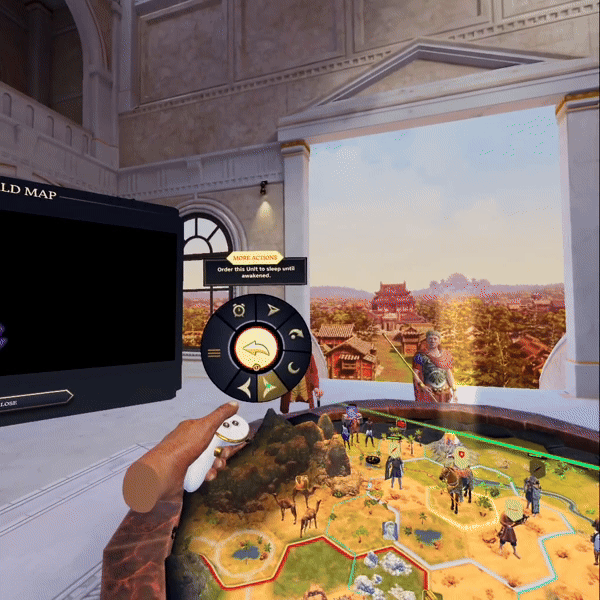
This is good.
This is streamlining done well. And streamlining is all over the place here.
Great works, diplomacy, and citizen management are just a few things that have been reworked to be more straightforward; mostly—in my view—for the better.
There are exceptions to the efficacy of this streamlining philosophy, however.
Like how my beloved (though controversial) religious combat system is gone in favour of a one-note spam-missionaries-full-stop chore.
And—most critically—the game “streamlines” how much information it gives you (read: not enough).
Many reviews have complained that the Civilopedia—Civilization’s in-game encyclopedia of units, systems, resources, wonders, and the rest—is comparatively barren in this title; leaving players to guess at or Google how optimally to actually play the game.
In VR, Civ VII simply does not have a Civilopedia.
What?
Yeah!
No? What?
No! Yeah!
There is an option to allow for “tutorial” pop-ups throughout your game.
But then you have to listen to all of the information about everything you do know just to finally get to what you don’t.
And since generally you don’t know what you don’t know, that repetitive blithering is actually the optimal native route to learning the game; a bold choice in the face of the long-standing myth that games are supposed to be fun.
4X gameplay is all about—truly all about—making diligent, intelligent strategic decisions based on the information you have available.
It’s about slowly overcoming obstacles through intentional choices, weighing pros and cons of different paths and knowing when to shift course.
How are you supposed to do that without knowing stuff?

Knowing stuff is one hundred percent necessary to winning a game of Civilization, yet Civ VII does a woefully inadequate job of teaching you the stuff that you need to know.
“Well,” you might be thinking “I’ll just pull up the Civilization Wiki in another window and switch between apps when I need to! Easy!”
Hey! Yeah! No you won’t!
This game takes all of the memory that your Quest 3 has available without background processes and still runs choppy.
MR stands for “mixed reality” but—if both battery and gameplay performance are to be believed—here it also stands for “more resources”, so don’t think you can easily reference your PC for info either.
The options then are to:
- constantly take your headset off- find the info you need- and then put it back on;
- risk crashing the game by playing in MR, or—like I did—
- just accept that your first game or two will be strategically suboptimal and then do your research between play sessions.
Working around the bugs and crashes in this game is like having a great catchup with a beloved old friend using only 2010s-era voice-to-text.
You have to be almost robotically deliberate—nice and slow—just to get things to about three-quarters of where they’re supposed to be period no. As in the punctuation not. The word. Oh so now when I say. You put a.

Civ VII’s UI is especially buggy.
Looking through the various tech trees requires that you select whatever upgrade you’re interested in to bring up a side window that explains what it does.
This function broke—on average—about once every nine turns in my playthrough.
And in a game that takes a triple-digit number of turns to get all the way through—even on the fastest speed—that meant saving and reloading dozens of times; almost never getting to play for more than an hour without doing so.
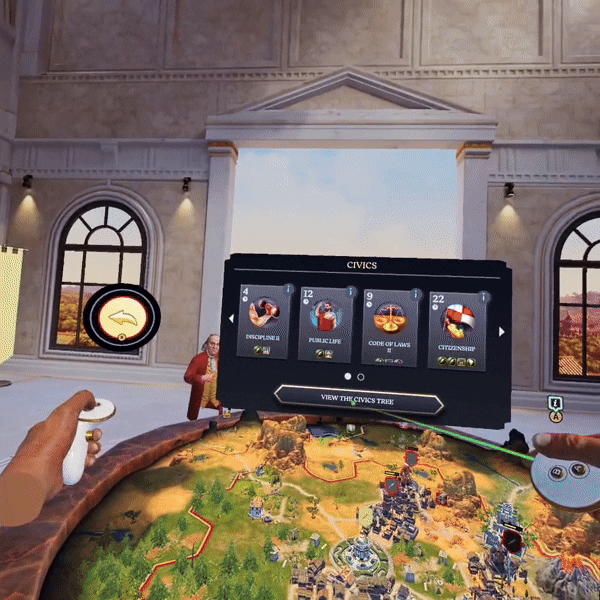
But another—even more common—bug was in the yield previews for improving tiles.
Growing your settlements and producing buildings within them both require you to strategically improve certain tiles within those settlements’ borders.
Buildings yield adjacency bonuses from certain other types of buildings, and from natural features like mountains and rivers.
But when I went to select a tile to place an improvement, the yield numbers for each tile would just float off! The resource icons were there, but their values were wayyyy over on another part of the screen; half of them going in one direction, and half in the other.
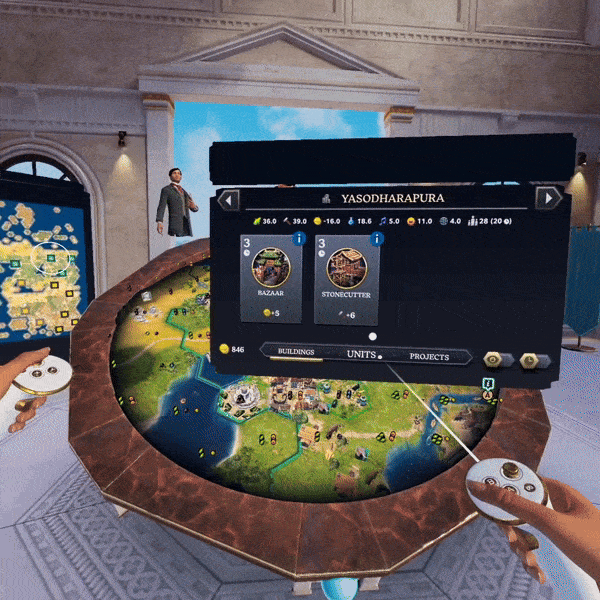
So I was left trying to either reverse engineer where I thought those numbers were shooting off from by sliding my screen around and looking at their relative positions, or else opening up the tech tree and rooting around to see if I could find a building’s adjacency bonus through its associated upgrade.
And remember, the tech tree I would rummage through as a workaround also constantly broke.
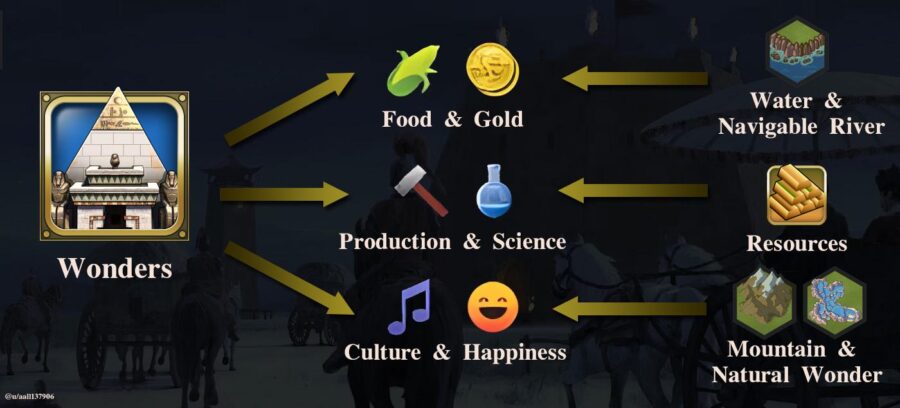
It’s pretty tough to strategize in a game with limited information.
It’s much harder when even that limited information bugs out.
And these particular bugs were extremely consistent.
But maybe I just got unlucky?
Maybe my playthrough was the exception instead of the rule?
Nope. Taking a quick glance at YouTube showed me that—at least for that latter yields bug—other people were experiencing it too.
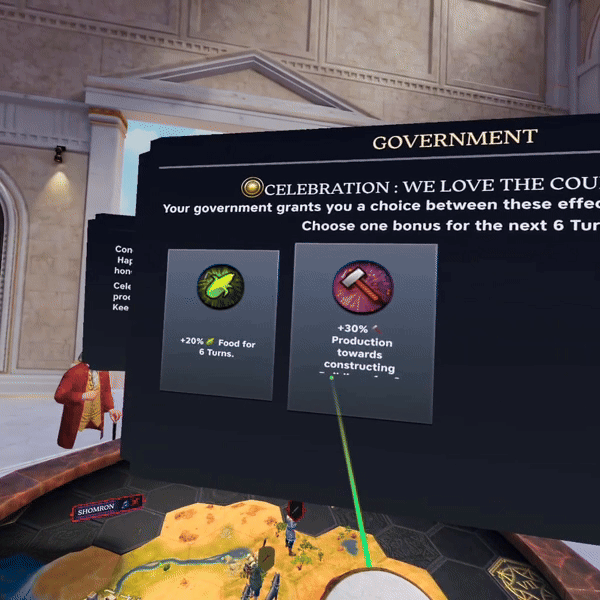
One bug in particular locked me out of the game entirely!
I spent hours trying to figure it out.
2K support couldn’t help me and Meta support couldn’t help me.
So I’ll tell you what it was and how I fixed it, just in case you come across this issue:
At one point I let my battery die.
I got a low-battery warning while I was playing and thought that it wasn’t a big deal; I’d just play another round or two and if it died I’d charge it and begin again as I have with many other games.
Yet once I did, I would get only to the opening credits or loading screen and then crash straight back to the Quest home screen.
None of the usual steps worked (soft resetting, hard resetting, reinstalling, not even factory resetting worked).
What I ended up having to do was go into my Meta Quest Cloud backup and delete my Civilization VII data. Once I did this it started “working” again.
My hours of game progress, of course, were lost.
How to Fix Civ VII VR Crashing on Load Screen
So again—for clarity (and SEO, let’s be real)—if you cannot get past the Civilization VII VR loading screen and you’ve tried everything else, go to your Meta Quest Cloud and delete the game’s backups.
VERDICT
At its current price of USD $60, I absolutely cannot recommend Civilization VII VR.
Even though I think that the majority of this installment’s changes are good, the state of the game on the Quest right now makes it nearly unplayable.
I gave it much more than a fair chance.
If just about any other game had crashed or required reloading as much as this one, I would have stopped trying much earlier.
But as a fanboy who was—again—mostly enjoying the gameplay changes, and begrudgingly willing to do my homework to make them work, I gave a lot of charity with my time and attention.

I think the core concept of Civ in VR is cool.
VR Civilization means the (largely underutilized) potential to have multiple windows of information available around your game board instead of overlaying it.
You become a kind of Thoth-like deity beyond time, maneuvering and balancing vast and interconnected systems, unfathomable to the society you guide.
And (while a bit more pedestrian than Thoth-like) Civ’s MR mode could let you play around the house—change songs, talk with your family, get a snack, whatever—throughout the requisite hours needed for a good session of 4X gaming, if it wasn’t so choppy.

There is a lot to love here.
I think that many of the common complaints—about how civilizations change over ages, or how pushed-in the gameboard is—are overblown.
The music is great. The art and design are great.
This installment—while sometimes overdoing it—streamlines a lot of the Civilization experience while making room for new, more interesting mechanics (as well as throwbacks to old mechanics, like taking damage from traversing deep ocean).
But all-in-all, Civilization VII VR is broken to the point of being nearly unplayable and it’s just as pricey as AAA pinnacles of standalone VR like Asgard’s Wrath 2.
Now bear in mind that a lot of the individual factors scored in our patented and extremely scientific H.O.O.E.Y. scoring system are interdependent.
So things like “gameplay”, “replayability”, and “immersion” end up held back by “performance” if—like in this case—the game can barely play at all.
If and when some crucial updates around UI and stability come around, things will change tremendously. And I hope those changes come soon. I want to play this game as it’s supposed to be played!
But all I can review is all I’ve played.
And my playthrough of Civilization VII VR, as is, generously nets it a 4/10.
Hyper-Objective Omniscient Evaluation Yardstick (H.O.O.E.Y.)
Scores are out of 10, where 10 is a masterpiece, 1 is unplayable, and 5 is just average.
Gameplay has a heavier weighting toward the overall score.
Gameplay – 3
Graphics – 7
Immersion – 2
Replayability – 3
Performance – 1
Sound – 8
Image / video credit: Auganix (unless otherwise stated)
About the author
Kierkegaard once said that the artist is like one stuck inside Phalaris' brass bull, which burned up its victims and—due to the formation of its apertures—made beautiful music from their anguish.
The critic, he said, is just like the artist except he doesn't have the anguish in his heart nor the music on his lips.
A lifelong gamer based out of Vancouver, Pelé disagrees with Kierkegaard.
